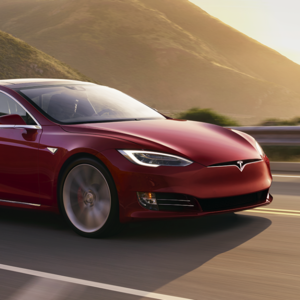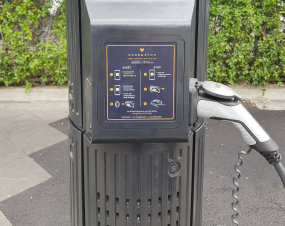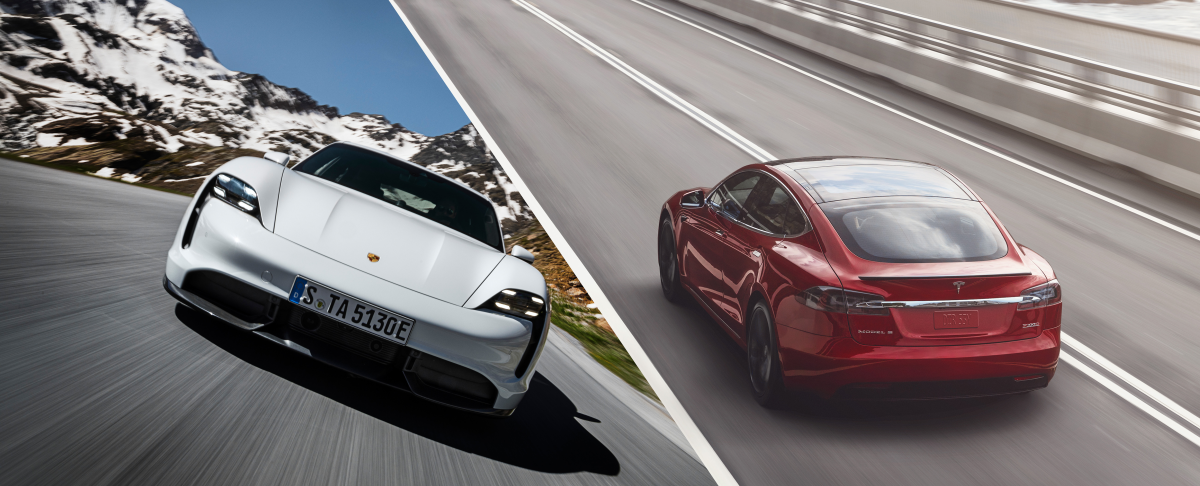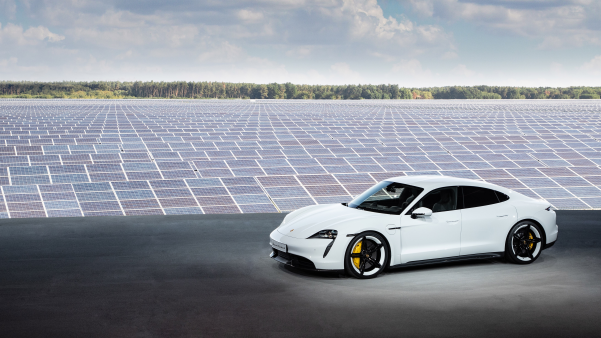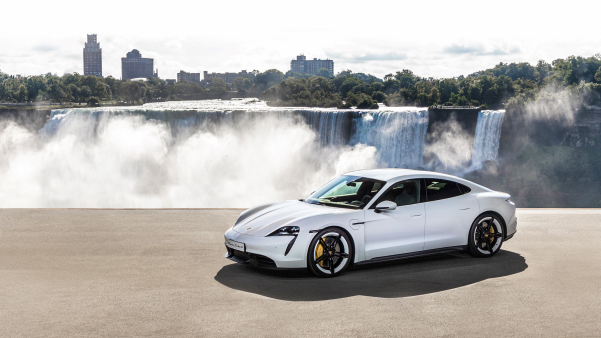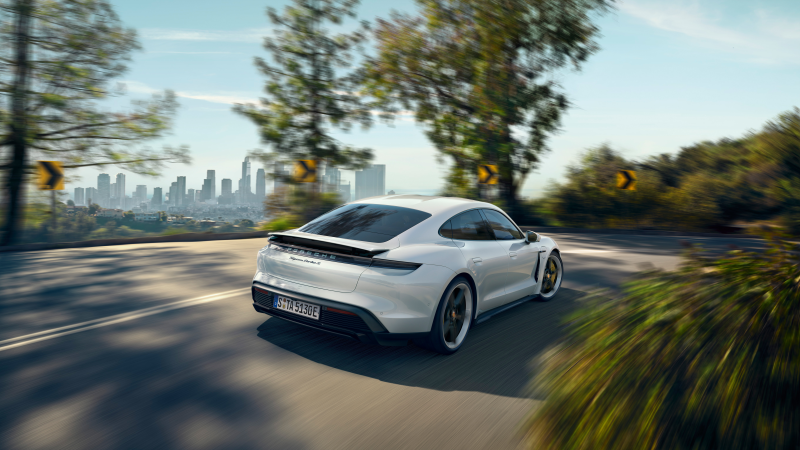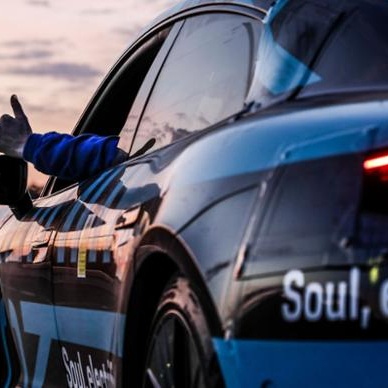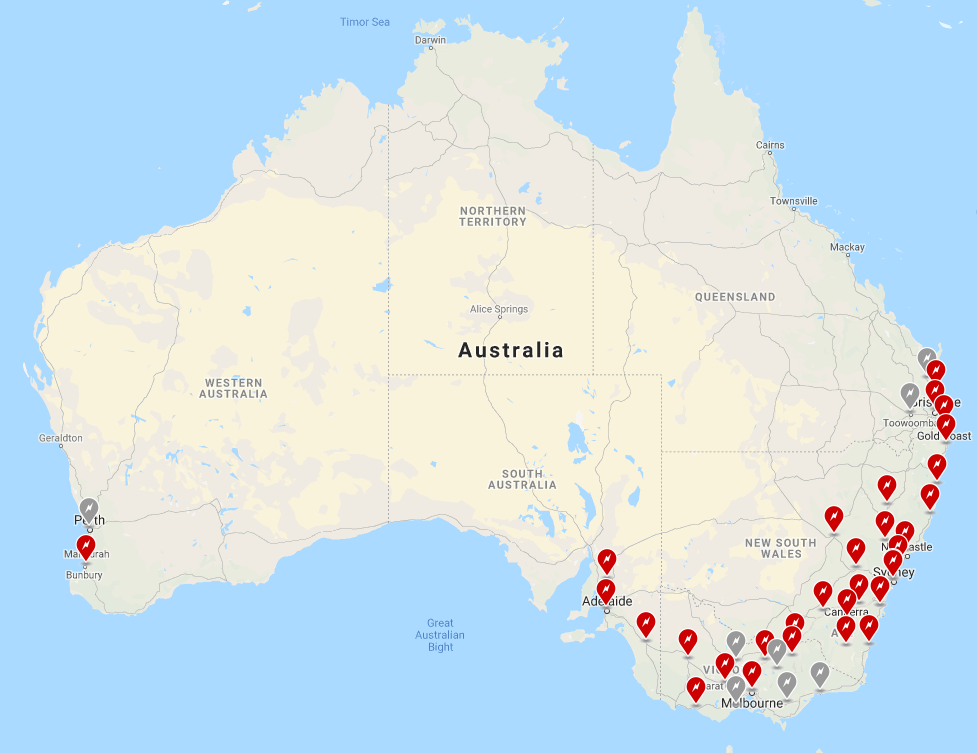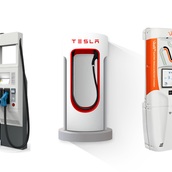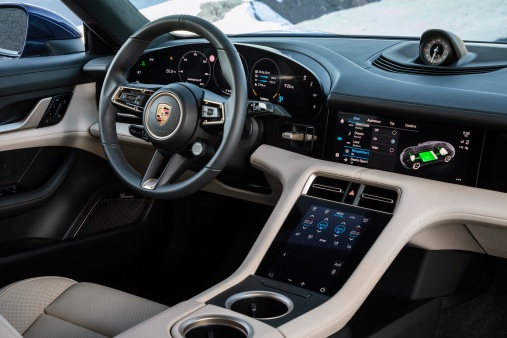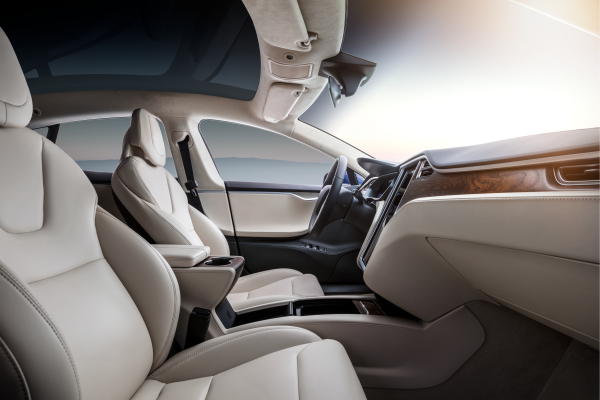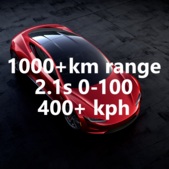The performance EV game is rapidly heating up, and Porsche have confirmed their place at the table with the announcement of the all-electric Taycan. But will impressive specs and a Porsche pedigree be enough to unseat Tesla’s dominant Model S Performance? We sift through the stats to find out.
There’s been no shortage of hype behind the Taycan, especially after its tri-continental premiere yesterday where Porsche spared no expense on wallpaper-worthy backdrops for their latest model.
China launch
Europe launch
North America launch
Porsche have revealed two initial variants for the Taycan, the ‘Turbo’ and ‘Turbo S’. Putting aside the fact that EVs don’t use turbochargers, they’re both set to deliver some impressive performance.
Off the line
The Taycan Turbo S has 560 kW of ‘overboosted’ power, getting from 0 to 100 km/h in 2.8 seconds for a 260 km/h top speed. The Turbo comes close on its heels and will be indistinguishable for most drivers, matching the top speed with a marginally slower 3.2s 0-100 and 500 kW peak power output. Both models weigh in at a hefty 2300 kg.
Certainly not bad, but not quite enough to make the Model S sweat. Tesla’s 4-door sedan is no slouch with a 2.6s 0-100 and a 250 km/h top speed. It’s closely matched to the Taycan on weight (2250 kg) and power (568 kW). Since the Model S has been in production, however, independent testers have improved these numbers — some of them by a lot.
Production Tesla Model S P100DL sets Motor Trend all-time world record to 60 mph in 2.27 sec https://t.co/sxALQrM5Ls
— Elon Musk (@elonmusk) February 7, 2017
So who takes it? To be honest, this one is near-enough to a draw on paper; we’ll have to see how the Taycan fares in the hands of drivers before anyone can make a definitive judgement on its performance credentials.
But with Porsche’s sports heritage and low heat 800 V architecture, the Taycan will most almost certainly be a more track-friendly offering than the Model S.
Taking Charge
Even if the Taycan can’t fend off Tesla on performance specs, they might be able to on charging. Porsche have been extremely vocal about their first-of-its-kind 800 V architecture for the Taycan. Together with a beefy 270 kW peak DC charge rate, it claims to deliver up to 100 kms of range in just 5 minutes, with a 5-to-80% charge in as little as 22.5.
And they aren’t afraid to show it off. Thanks to that incredible charge speed, a Taycan prototype was able to clock over 3400 km in a single day on an Italian test track.
Taycan hits 3425 km over 24hr endurance slog
Australia’s Tesla supercharger network
So how does the Tesla measure up at the plug? While it lacks the industry-leading charge specs of the Taycan, the Model S has access to 480 V DC fast charging at a growing network of Tesla superchargers worldwide. The latest V3 superchargers are promising 250 kW output, but even the existing V2 chargers deliver a healthy 150. The Model S’ charge speed is also likely to improve over time thanks to Tesla’s over-the-air software updates.
With the beefier 800 V under its belt, the Taycan will charge the fastest of any EV in the country, when used in conjunction with Australia’s ultra rapid charging infrastructure from our friends at Chargefox. However, Porsche owners won’t have access to the free unlimited supercharging Tesla is currently offering with new Model S sales. Maybe it’s something Porsche owners can ask for, with both Jaguar Land Rover and BMW announcing charging partnerships with Chargefox.
The future of EV supercharging
A pretty penny for performance
It’s early days for the Taycan. We’re unlikely to see models land until late next year and Australian pricing is yet to be announced, but estimates place the Turbo around $300,000 and the Turbo S around $350,000. Needless to say, it won’t be cheap. US customers will be laying down $150,900 for a base model Turbo (~$222,000 AUD) up to $241,500 (~$355,000 AUD) for a top-spec Turbo S.
Next to the Taycan, the Tesla looks like a bargain. Aussie customers pay between ~$170,000 and ~$200,000 for a Model S Performance today. We’re not saying $200K is cheap, but it takes a special kind of rich to not notice the $150,000 premium on the Taycan.
That said, Porsche have announced that lower performance models will soon be joining the Taycan lineup, starting with the Taycan Cross Turismo. Just what they lose and/or gain in affordability remains to be seen.
Optional extras
While the pricetags on the Tesla and the Taycan are impressively meaty, their interiors don’t have to be. Both models are entirely leather free, but Porsche does offer leather on the Turbo and Turbo S. Scrolling through Porsche’s online customization site can be an uphill battle with the abundance of toys to choose from, very few of which are displayed visually.
Tesla’s platform is refreshingly simple by comparison. Options are clear and distinct with fast-loading updates and visual displays for each. If you enjoy total customization you’ll prefer the Porsche, but there’s no denying that Tesla makes the process significantly easier.
Interior Design
And then, once you’ve fought your way through the purchasing process, you might take a moment to appreciate the interior of your shiny new EV. Both Tesla and Porsche have leaned into the tech-heavy aesthetic for their electric offerings, with the usual bevy of buttons and gauges swapped for touchscreens and digital displays.
Even without the value-adding extras, there’s a distinctly luxury vibe to the interiors that will no doubt please customers. Tesla offers high-end audio, heated seats, and HEPA air filtration as standard, while Porsche reserves most of the gimmicks as paid extras. They do, however, include their “Hey Porsche” voice control system, which has the potential to be either extremely convenient or entirely forgettable depending on the driver. Perhaps one to not tell the kids about.
Taycan interior
Model S interior
So?
There’s no denying it, the Taycan and the Model S are both triumphs of design and engineering. While we, and many others, have pit them against one another, they aren’t really competing in the same game. The Model S is a 4-door saloon that just happens to have record-setting performance, the Taycan is an unapologetic sportscar in the Porsche tradition.
The comparison that will matter in the long run isn’t Taycan vs. Model S, it’s Taycan vs. other ICE cars.
Tesla also have the Roadster set to be properly premiered in 2020, at around the same time as the Taycan, and there’s no denying it’s going to be competition for Porsche. And, if it lives up to Elon Musk’s extremely bold claims, it could blow Porsche out of the water (though we don’t know what else Porsche has in the works. For now, though, it’s just speculation, and we’ll all have to content ourselves comparing Model S apples with Turbo S oranges.
Predictions and promises for the 2020 Tesla Roadster
Check out more EV news and updates on the JET Charge blog. You can contact us at info@jetcharge.com.au with personal EV charging inquiries or follow our Facebook page for regular updates.


